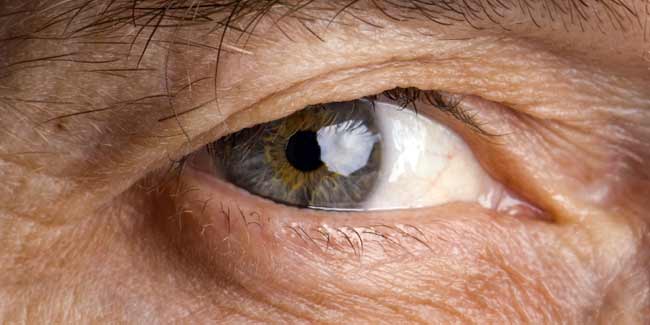
The lens of a normal eye is clear. When cloudy areas develop in the lens inside the eye, they are called cataracts. They can form in one or both eyes- when cataracts develop in both eyes, one eye is more severely affected than the other.  Light passes through a normal clear lens to the back of the eye which enables a person to see well-defined images. When a part of the lens becomes opaque, light cannot pass through easily- this makes the person’s vision blurry. He may feel like he is looking through cloudy water or a fogged-up window.
Light passes through a normal clear lens to the back of the eye which enables a person to see well-defined images. When a part of the lens becomes opaque, light cannot pass through easily- this makes the person’s vision blurry. He may feel like he is looking through cloudy water or a fogged-up window.
The more opaque the lens becomes, the worse a person’s vision gets.
Table of Content:-
Types of Cataracts
Age-related Cataracts- As per the name, this kind of cataract results from ageing.
Congenital Cataracts- Some babies are born with cataracts as a result of an infection, injury, or poor development. Some babies develop the condition during childhood.
Secondary Cataracts- Medical conditions like diabetes, or exposure to toxic substances, certain drugs, UV rays, or radiation also can result into the patient developing cataracts.
Traumatic Cataracts- An injury to the eye causes this kind of cataracts.
Expected Duration of Cataracts
It is a long-term problem. Vision gets worse over time in most patients. However, after cataract surgery, expect your vision to begin improving within a few days. Your vision may be blurry at first as your eye heals and adjusts.
Effects of Cataracts on Vision
National Eye Institute (NEI) states that cataracts affect a patient’s vision in the following ways:
Clumps of protein reduce the sharpness of the image reaching the retina.
The lens is mostly made up of water and protein. When the protein clumps up, it clouds the lens and reduces the light that reaches the retina. When the clouding becomes severe, it causes blurred vision. Most age-related cataracts are a result of protein clumping.
A small cataract affects only a small part of the lens. The patient may not notice any changes in his vision. Cataracts tend to "grow" slowly, so vision gets worse gradually. Over time, the cloudy area in the lens may get larger, and the cataract may increase in size. Seeing may become more difficult. Your vision may get duller or blurrier.
The clear lens slowly changes to a yellowish/brownish colour, adding a brownish tint to vision.
As the clear lens slowly colours with age, your vision gradually may acquire a brownish shade.
At first, the amount of tinting may be small and may not cause a vision problem. Over time, increased tinting may make it more difficult to read and perform other routine activities. This gradual change in the amount of tinting does not affect the sharpness of the image transmitted to the retina.
If you have advanced lens discoloration, you may not be able to identify blues and purples. You may be wearing what you believe to be a pair of black socks, only to find out from friends that you are wearing purple socks.
Risk Factors for Cataracts
The following factors can put you at risk of developing cataracts:
- Increasing age
- Diabetes
- Drinking excessive amounts of alcohol
- Excessive exposure to sunlight
- Exposure to ionizing radiation, such as that used in X-rays and cancer radiation therapy
- Family history of cataracts
- High blood pressure
- Obesity
- Previous eye injury or inflammation
- Previous eye surgery
- Prolonged use of corticosteroid medications
- Smoking
If left untreated, cataracts may lead to blindness. If you have lost some sight from cataract or cataract surgery, ask your eye care professional about low vision services and devices that may help you make the most of your remaining vision.
Read more articles on Cataracts.
How we keep this article up to date:
We work with experts and keep a close eye on the latest in health and wellness. Whenever there is a new research or helpful information, we update our articles with accurate and useful advice.
Current Version